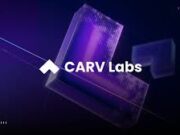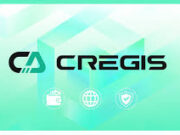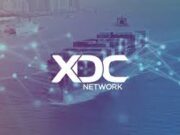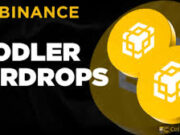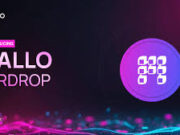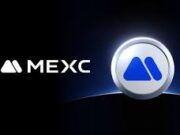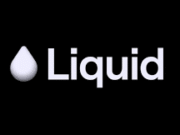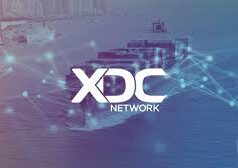In the evolving world of digital finance, two names are making waves: Tatum (a blockchain infrastructure platform) and Plasma (a Layer-1 blockchain built purpose-fully for stablecoin payments). Their recent integration signals a meaningful shift in how stablecoins are transferred, settled, and built upon. In this article, we’ll unpack what this means, how it works, and what it could mean for finance and development going forward.
What’s Changing: Tatum Integrates Plasma
At its core, the story begins with Tatum’s latest update: they’ve added support for Plasma via their Blockchain Gateway. According to their changelog, “Plasma is a Layer-1 blockchain architected specifically for stablecoin payments and high-velocity dApps” — and their integration unlocks RPC access to Mainnet and Testnet for Plasma via standard Ethereum JSON-RPC methods. (docs.tatum.io)
What this means in plain language: developers using Tatum can now use the same toolsets they know (Ethereum‐style RPC, familiar SDKs) to build on Plasma with little extra friction. And crucially, Plasma offers zero‐fee stablecoin transfers (specifically USD₮/USDT) and near-instant settlement, thanks to its architecture. (plasma.to)
There’s also confirmation from other sources: one piece notes Plasma “offers zero gas fees, instant confirmations, and privacy features … compatible with Ethereum development tools.” (Edgen)
So: the integration means Tatum users get access to a chain optimized for stablecoins, no gas fees for certain transfers, and full EVM compatibility for devs.
Why This Integration Makes a Difference
1. Frictionless Stablecoin Transfers
In many blockchains today, transferring a stablecoin involves paying network/“gas” fees (often in the native token) and waiting for transaction confirmation. With Plasma, as the docs say: “Send USD₮ with no fees whatsoever or extra tokens for gas.” (plasma.to) That means- in theory- moving value becomes closer to “send an email” than “pay a network tax + wait minutes/hours”.
For real-world applications—remittances, micropayments, merchant settlements—eliminating fees and waiting times is highly impactful.
2. Developer Ease & Ecosystem Leverage
Because Tatum already supports 90+ blockchain protocols and offers unified APIs for developers. (tatum.io) With the Plasma integration, developers don’t need to treat this as a niche experiment: they can reuse familiar tooling (Ethereum JSON-RPC, familiar SDKs) to build DeFi apps, wallets, payment flows, on a chain built for scale and low cost.
That lowers the barrier to entry for creating applications that truly move stablecoins at scale.
3. EVM Compatibility + Performance + Specialization
Plasma’s architecture is described as “purpose-built for stablecoin payments, not general-purpose computation.” (plasma.to) The network supports full EVM compatibility—meaning smart contracts built for Ethereum can often migrate with minimal changes. Meanwhile, Plasma applies performance and fee models tailored to payments (rather than generic dApps) which increases appeal for finance use-cases.
4. Potential Global Financial Impact
Stablecoins have grown considerably and are increasingly used for cross-border flows, remittances, payments in markets with currency instability. Plasma positioning itself with zero fees and instant settlement means the infrastructure is aligning with global finance needs rather than only speculative DeFi. One analysis notes that stablecoin volume in 2024 alone was ~$32.8 trillion. (ForkLog)
By offering infrastructure that lowers cost and friction, the integration could help unlock wider adoption of stablecoin-based transfers, especially in regions underserved by traditional rails.
How It Works Under the Hood
A. The Blockchain: Plasma
- Plasma uses a modified consensus mechanism (PlasmaBFT) built to achieve sub-second finality and high throughput. (Gate.com)
- Zero-fee transfers for USD₮ are achieved via a paymaster model: the protocol sponsors gas costs for these transfers, so users don’t need to hold native tokens for gas. (plasma.to)
- It supports custom gas tokens—transactions can pay gas in whitelisted assets such as USD₮ or BTC rather than a specialized native token. (plasma.to)
- It includes EVM compatibility (via a Reth client) so Solidity smart contracts, Ethereum tools (Hardhat, Truffle) can work. (Gate.com)
- It also plans or includes a native Bitcoin bridge (so value from BTC can be anchored or bridged) increasing security/interop. (Gate.com)
B. The Integration: Tatum‘s Gateway
- Tatum’s API/documentation shows endpoint access: for example, “https://plasma-mainnet.gateway.tatum.io” for Plasma mainnet RPC access. (docs.tatum.io)
- Developers using Tatum’s SDK can drop in Plasma as a supported chain, enabling them to build “zero-fee stablecoin transfers” and DeFi on Plasma, with minimal dev rework.
- This means lower infrastructure overhead: developers don’t have to spin up/maintain nodes for Plasma—they leverage Tatum’s gateway.
C. Developer/Financial Application Implications
- You can build dApps/wallets where users send USDT (or other stablecoins) with zero fee and instant settlement—improving UX.
- DeFi protocols can use Plasma for settlement layers or rails for stablecoins, possibly reducing reliance on more congested networks (e.g., Ethereum) or high-fee transfers.
- Businesses (merchants, remittances, cross-border payments) can integrate stablecoin flows with cost-efficiency and speed, using familiar development stacks.
What This Means for Different Stakeholders
For Developers
If you’re building—say, a wallet, remittance app, subscription service, DeFi protocol—this integration opens a channel where you get:
- Familiar tooling (EVM compatible) → easier deployment.
- Zero‐fee transfers (for stablecoins) → easier UX, less friction in user onboarding.
- Instant / near-instant settlement → better UX and business scalability.
- Lower cost infrastructure (since fees are minimal and gateway provided) → better margins and shorter development cycles.
For Businesses & Fintechs
- Lower operational costs for stablecoin payments (no gas fees) translate into tighter margins or enabling price-sensitive flows (micropayments, remittances).
- Faster settlement means less cash flow risk and better user satisfaction.
- Ability to integrate DeFi infrastructure more easily (for example: lending, payments, loyalty) because the rails are efficient.
- Entering markets with currency volatility becomes more viable (e.g., parts of Africa, Latin America) because stablecoins + zero fees + fast settlement = strong use-case.
For End Users
- Sending stablecoins becomes cheaper (in fact zero fee) and quicker.
- They don’t need to worry about native gas token holdings (one of the UX frictions in many networks).
- The expectation of “just work like a payment” moves closer to reality.
- Since the chain is EVM compatible, users may benefit from a broader wallet/contract ecosystem and interoperability.
For the Broader Ecosystem
- This may spur more adoption of stablecoin-first infrastructure (rather than generic smart contract chains).
- It may raise expectations: when users/merchants see zero-fee, instant settlement flows, they may migrate away from costlier rails.
- Pressure on older networks: scalability and fee issues on older chains may become more visible.
- Financial infrastructure shifts: stablecoins are more than “crypto speculation”—they become payments infrastructure with real enterprise‐grade rails.
Considerations & Caveats
While the integration is exciting, there are some factors to keep in mind:
- Maturity & adoption: Plasma is new, and while features are live (docs show zero-fee transfers) some advanced features (e.g., confidential transactions, Bitcoin bridge) remain to be fully rolled out. (plasma.to)
- Ecosystem support: While EVM compatibility is key, network liquidity, token availability, wallet support, and DeFi integrations will all matter for real-world usage.
- Security & decentralization trade-offs: Some reports suggest early phases may be more centralized (for performance) and may evolve decentralization over time. (ForkLog)
- Regulatory and compliance environment: Stablecoin payments, cross-border transfers, low/no fees raise questions about compliance, AML/KYC regimes, etc. Businesses will need to plan accordingly.
- Competition: Other chains and networks are also targeting payments, scaling, stablecoins—so success will involve adoption, network effects, partnerships.
- User education & change management: For many users, “just pay” must feel as simple as existing payments. Achieving that requires good UX, wallet integration, reliability.
What’s Ahead for this Integration and the Space
Looking forward, here are several trends and developments one should watch:
Expansion of Use-Cases
With infrastructure like Tatum + Plasma in place, we can expect:
- More remittance platforms leveraging zero-fee rails for stablecoins (especially in emerging markets).
- Merchant payments and micropayments (subscriptions, in-game payments) to adopt stablecoins more broadly.
- DeFi applications migrating or launching on Plasma to exploit the low-fee rails.
- Multi-chain wallets and infrastructure providers (like Tatum) offering more turnkey support for chains like Plasma, making adoption easier.
Partnership & Integration Growth
We already see wallet integration announcements (e.g., Trust Wallet announcing Plasma support for stablecoins with near-zero fees. (trustwallet.com) We should expect:
- Payment / fintech providers integrating Plasma rails.
- Stablecoin issuers adapting to support Plasma and its features.
- Cross-chain bridges and liquidity protocols ensuring tokens move in and out of Plasma ecosystem fluidly.
- Dev tooling improvements, SDKs, monitoring, analytics for Plasma via Tatum and other providers.
Scalability & Network Maturation
As adoption grows, network performance, decentralization, governance, security will all evolve. Key things to monitor:
- How many transactions per second Plasma delivers in live, global usage.
- The decentralization of validators and the security of the network as value flows increase.
- The rollout of advanced features like confidential transactions, Bitcoin bridge, and how these impact adoption.
- Ecosystem growth: how many dApps, DeFi protocols, stablecoin issuances choose Plasma as their base.
Competitive Landscape
Other networks are also targeting payments & stablecoins. Therefore:
- We’ll see comparisons of fees, settlement speed, UX across chains.
- It will matter which rails developers and businesses pick. The choice may hinge on adoption, liquidity, integrations, and cost.
- The “specialization versus general-purpose” debate will intensify: is it better to build on a chain optimized for payments (like Plasma) or on a large ecosystem (like Ethereum) and deal with higher costs?
Implications for the Nigerian / African Market
Given your location in Lagos, Nigeria, this integration carries particular relevance:
- Nigeria and much of Africa face high remittance costs, currency volatility, and limited efficient payment rails. A zero-fee stablecoin rail could reduce costs significantly.
- Businesses in Nigeria (e-commerce, subscription services, micropayments) may benefit from low-cost stablecoin flows.
- Developers in Nigeria now have easier access via Tatum and Plasma to build payments / DeFi solutions without prohibitive infrastructure cost.
- Care must be taken around regulatory compliance: stablecoins, cross-border flows, AML/KYC are all relevant. Local regulatory frameworks will matter.
- The user experience will matter: local wallets, stablecoin availability, on-ramp/off-ramp, partner integrations will influence adoption.
Finally
The integration of Tatum with Plasma signals a meaningful step towards a payments-first architecture in the blockchain world: zero-fee stablecoin transfers, instant settlement, and developer-friendly access via familiar tooling.
While challenges remain (adoption, liquidity, regulation), the potential is clear: cheaper, faster stablecoin rails that feel more like “payment networks” than speculative DeFi playgrounds.
For developers and businesses, this creates a chance to rethink how money moves—especially in markets where traditional payment rails are inefficient or expensive.
As always, it will pay to stay vigilant: monitor how the network performs under real use, track how quickly partners and integration ecosystems grow, and ensure compliance/regulatory alignment.
In short: we may be witnessing a shift in the underlying rails of stablecoin payments. The railcar is ready—now it’s a matter of seeing how many choose to ride.
Sources:
- “Plasma (New RPC): Mainnet + Testnet” — Tatum Documentation. (docs.tatum.io)
- “10 Best RPC Node Providers Compared (2025)” — drpc.org. (drpc.org)
- “Building a Zero-Fee Stablecoin Payment Layer-1 Blockchain” — Gate Learn. (Gate.com)
- “A high-throughput, EVM-compatible stablecoin chain – Plasma” — Plasma chain website. (plasma.to)
- “Exploring Plasma Network: A New Integration for Trust Wallet Users” — Trust Wallet Blog. (trustwallet.com)
- “’Blockchain for the people’ or a gift to venture capital?” — ForkLog. (ForkLog)
- “Tatum: The Go-To Blockchain Development Platform” — Tatum website. (tatum.io)


